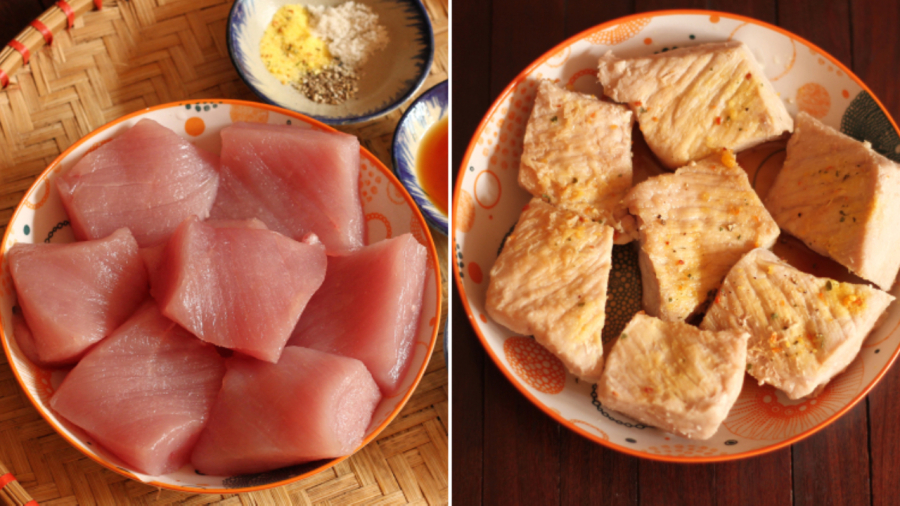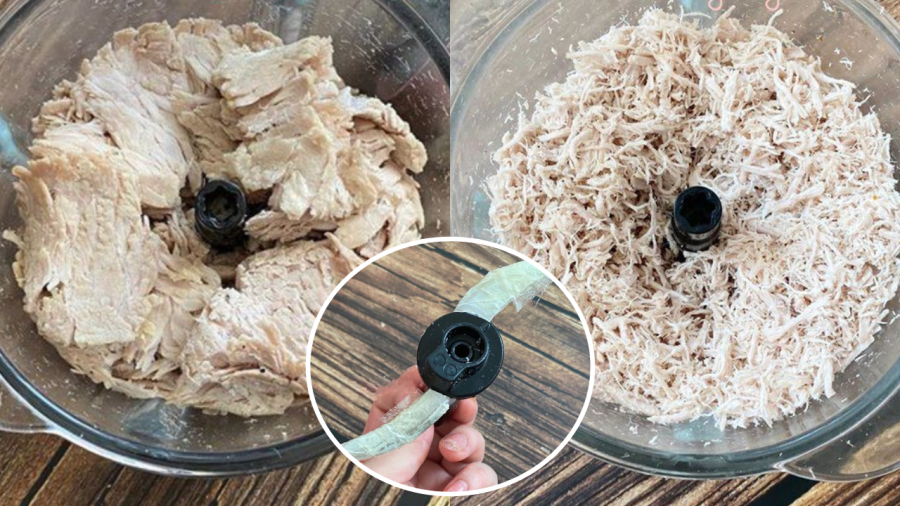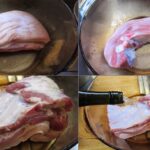Meat floss, or ‘ruốc thịt’, is a beloved, versatile dish in Vietnamese cuisine, commonly paired with white rice, sticky rice, porridge, or bread. While it’s not a complicated dish, the process of making it can be tedious and laborious, especially when it comes to the traditional method of hand-shredding the meat. This age-old technique results in soft, fluffy floss, but it is very time-consuming.
On the other hand, store-bought meat floss often falls short in terms of flavor and quality. So, what’s the solution to this dilemma?
Instead of manually shredding the meat, you can use a meat grinder or food processor to speed up the process and achieve similar results. This small change can significantly reduce the time and effort required to make this delicious dish.
Selecting the Best Pork
For meat floss, we only use lean pork, specifically cuts like tenderloin or pork loin. Look for meat with a bright, pink hue, devoid of any rancid or putrid odors. The ideal texture is moist yet dry to the touch, with a good bounce and no excess water.
Preparing the Pork
Once you’ve selected your pork, give it a good rinse and trim away any tendons or excess fat. For longer, fluffier strands of floss, cut the meat into large, thin slices, following the grain of the meat.
Marinate the pork slices with a mixture of fish sauce, seasoning powder or chicken broth powder, black pepper, and MSG (optional). You can adjust the quantities to suit your taste.
Place the marinated pork in a pan and simmer over low heat.

For longer strands of meat floss, cut the pork into large, thin slices.
Once the pork is cooked, transfer it to a bowl. While it’s still hot, use a garlic press or the flat side of a knife to gently pound the meat. Doing this while it’s warm will make it softer and easier to work with.
Setting Up Your Grinder or Food Processor
To achieve that signature fluffy texture and avoid breaking the meat strands, it’s crucial to wrap the blade of your grinder or food processor securely. Use tape to tightly bind the blade, ensuring it’s fully covered to minimize the blade’s sharpness and prevent the meat from becoming overly fine or mushy.
Add the pounded meat to the grinder or food processor while it’s still warm to enhance the fluffiness of the floss.
Pulse the machine in short bursts of about 3 seconds each, releasing the button in between. Avoid holding it down for too long, as this can break the meat strands. Continue until you achieve the desired fineness.

Using a grinder or food processor saves time and effort in making meat floss.
Return the processed meat to the pan and sauté over low heat until it’s dry and fragrant.
Some manufacturers now offer grinders with special attachments designed specifically for making meat floss, making the process even more streamlined and efficient.



































